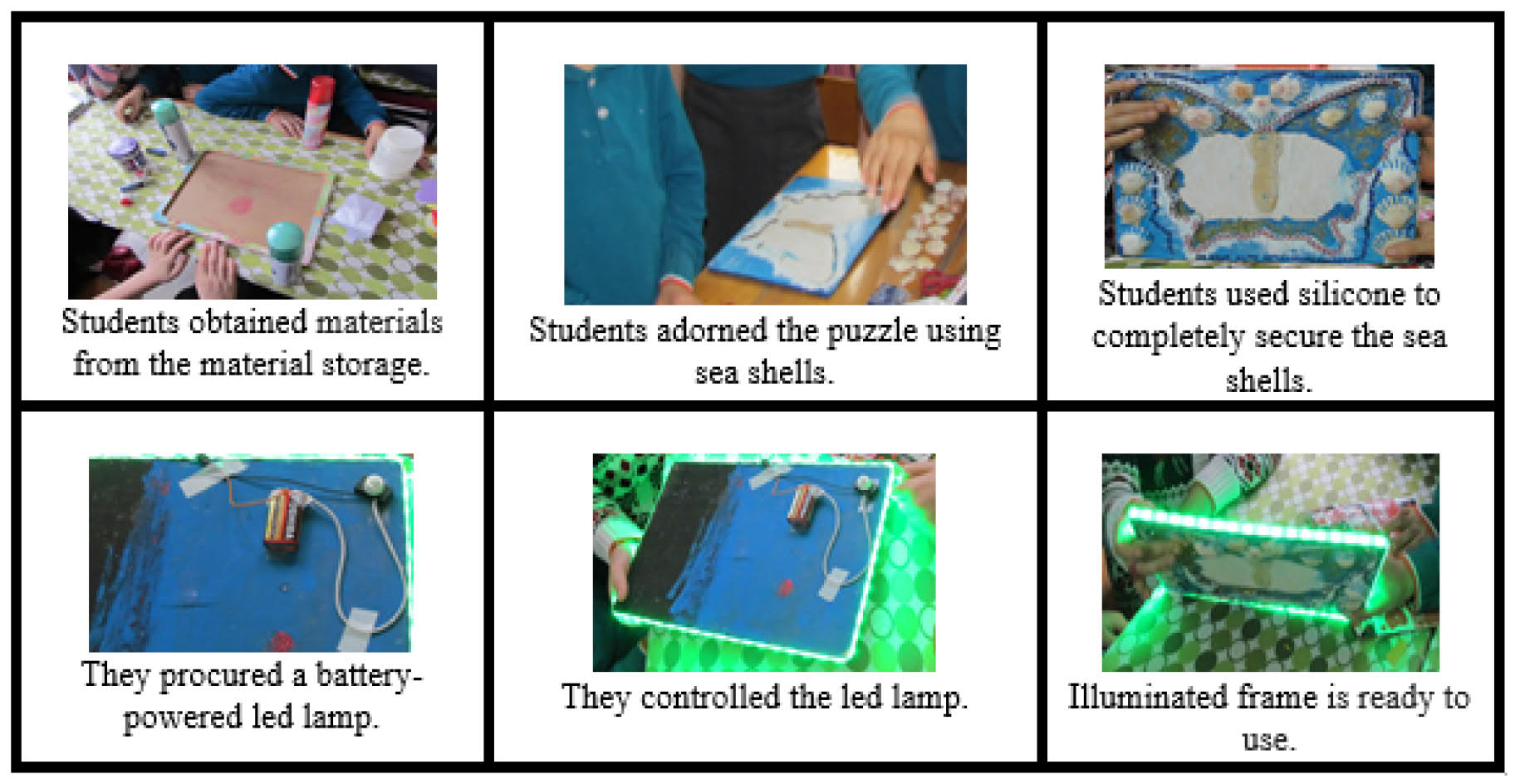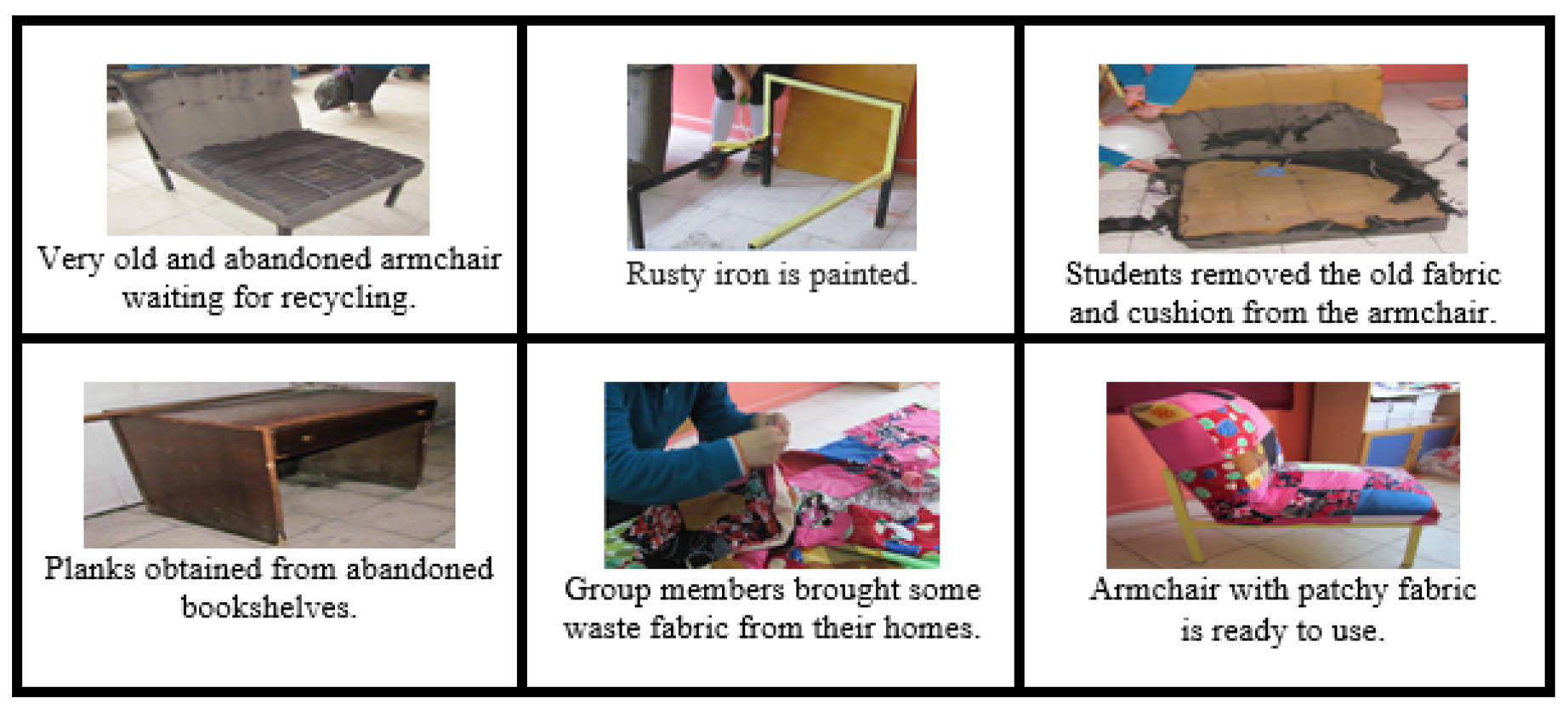Asia-Pacific Forum on Science Learning and Teaching, Volume 19, Issue 1, Article 15 (Jun., 2018) |
The case study method was used in this study. The case study method enables a researcher to closely examine the data within a specific context. The case study method investigate contemporary real-life phenomenon of a limited number of events or conditions, and their relationships (Yin, 1984). In this study, the effects of project-supported learning environments on students' conceptual understanding were investigated. Within the context of the case study method, the development of each student was examined individually.
The sample group for the research consists of 4th grade primary school students. A total of 18 students from a class with 18 students [10 girls and 8 boys, mean age: 10.78)] participated in the research. One voluntary teacher from the same school participated in the research. The teacher graduated as a primary school teacher from university. The teacher had eleven years' experience. The teacher was provided with information by the researchers with the aid of the intervention process, before the intervention.
A concept test and an interview consisting of semi-structured questions have been used in this research. The concept test included two open-ended questions. These questions are; "How would you describe recycling? Please explain." and "What do you understand by the concept of recycling? Please show by drawing." Drawing is a technique which ensure the discovery of dimensions which cannot be discovered with open-ended and other understanding research techniques (White & Gunstone, 1992). Drawings are very valuable as they provide more detailed information beyond words (Bahar, Ozel, Prokop & Uşak, 2008).
The interviews were conducted to investigate the effectiveness of project based learning environments on the conceptual understanding of students. The semi structured interviews included two questions. These questions are; "How would you describe recycling? Please explain." and " Which substances may be recycled? Please explain." Individual interviews were used in this study and the interviews were conducted by the researchers. Two students selected from each project group participated in the interview. There were 4 different groups in the study.Preliminary and final interviews were conducted with 8 of the students ((S1, S2, S4, S5, S6, S15, S16, and S18). Voluntary students were selected in the interview process.
The concepts test were administered one week before the intervention. The same tests were employed after the intervention. To enhance content and face validity the tests were evaluated by two science teachers. To measure the reliability of the concept and drawing tests, they were implemented on 10 5th grade students, who learned these concepts in 4th grade. The first version of the concept test consists of 3 questions. Students were asked "Which substances may be recycled? Please explain." in the concept test. When students' answers to the first and second questions were examined, the second question was excluded from the test. The last version of the concept test consisted of two questions.
Marek's (1986) categorization has been used in the analysis of the concept test and interviews.
Table I. Categorization Used in the Analysis of the Concept Test and Interviews
Categories
Code
Point
Complete Understanding
A
3
Partial Understanding
B
2
Alternative Concept
C
1
No response or Irrelevant Responses
D
0
Content analysis was used in the second interview questions. The students answers were examined in detail, then codes were composed. Tables including frequency values related to each code have been presented in the result. In addition the first question of the conceptual tests was analyzed with a dependent t-test. The data obtained from the drawings has been presented with tables including frequency values. The students' drawings were examined in detail. Codes were composed according to the students' drawings. For example; student drawings related to the concept of heat were examined with these codes; "bottle and the recycle bin", "paper and recycle bin", "battery and recycle bin", "various recyclable materials", "others" and "no drawing". Also samples from student drawings related to each code have been shown in the tables. The students were coded in line with research ethics. For instance, student number 1 from the experiment group has been coded correspondingly, as S1PT in the pre-test and as S1LT in the post test. The students conceptual understanding related to the "recycling concept" is shown with graphics. Each graphic showed the students individual conceptual understanding before and after the intervention. This study was conducted as a case study, therefore; each students' conceptual understanding was investigated in depth with graphics and tables.
Within the framework of the study, the students in the classroom were divided into 4 groups. The first two groups were assigned 5 students each, and the third and fourth groups were assigned 4 students. Care was taken to ensure the heterogeneity of group elements. The teacher of the class made a presentation of 1 class (40 minutes) to the students, discussing how they would proceed. Then, the teacher took the students to the material storage room of the school. In the material storage room, the students worked with their group-mates and exchanged their views on what could be done with waste materials. The teacher gave the students a duration of 1 week. The teacher then asked the students to use that week to decide on what they could do with waste materials. The waste materials from the material storage room were chosen in line with the ideas provided by the students. Each week, the teacher reviewed the students' projects and provided feedback. In project-based learning, the students discovered the knowledge themselves, and structured the research on their own. In the following section, the projects implemented within the framework of the study are presented in detail.
The first group developed a model of the circulatory system. The students obtained cables from various unused electrical equipment, cardboards, fabric and fiber pieces from the material storage room. They made use of blue and red tapes to show the veins in the circulatory system. The blood shown in the system was made by the students in the group, using waste fabric and fibers. The members of the group had some form of labor division. 2 students drew the human body on the cardboard, while the remaining three placed the model of the heart and the tapes representing the blood vessels on the model. Figure 1 presented below is a compilation of the photos of the activities of the group members.
Figure I. Some Photos of the Activities of the First Group MembersThe second group developed a lampshade. The students obtained a broken sphere, a light bulb and batteries from the storage room. They voiced their intent to build a lampshade using these materials. One of the students set an electric circuit using materials such as the cable, light bulb, and battery, and came up with a working lamp. To adorn the chandelier, the students used paper in various colors. The students installed their light bulbs in the chandelier they built, only to realize that it did not produce sufficient light. Through further deliberation, they decided that they needed to increase the number of batteries in order to increase the amount of light produced. The students in the group thought about how to increase the amount of illumination, and reached the conclusion that using a larger bulb would help. The students brought a larger light, but failed to find a socket to install the larger bulb. Realizing also that they would not be able to operate it with batteries only, they thought of using a cable and a plug. The teacher brought a broken floor lamp from home, after securing the potentially hazardous sections and the plug and the cable using a tape. After attaching this cable to the chandelier, they connected it to the mains, and came up with a working means of lighting in the end. Figure 2 presented below is a compilation of the photos of the activities of the group members.

Figure II. Some Photos of the Activities of the Second Group Members
The third group developed an illuminated frame model. The students obtained a blank puzzle from the storage room. They said that they would build an illuminated frame using the puzzle. The teacher provided the necessary assistance with the sections to be removed from the puzzle using an adze. The students adorned the puzzle using sea shells, but soon realized that the glue they used failed to completely secure the sea shells. Seeing that, the teacher supplied the students with silicone. The students then adorned the puzzle board using tinsel, flakes, and sea shells. To illuminate the circumference of the board, they procured a battery-powered led lamp. Once the necessary arrangements were made for the led lamp, they placed it around the frame, and concluded the project. Figure 3 presented below is a compilation of the photos of the activities of the group members.
Figure III. Some Photos of the Activities of the Third Group MembersThe fourth group, in turn, came up with a new armchair project. The students saw a very old and abandoned armchair in the material storage room, and stated their intention to render it reusable through recycling. The students obtained some fabric and fibers abandoned in the material storage room. The students realized that the bottom section of the armchair lacked support. They covered the bottom section of the armchair using pieces of planks obtained from abandoned bookshelves. They then decided to go for a patchy fabric to drape the armchair. Each one of the group members brought some waste fabric from their homes, to add to the pieces found in the material storage room, to produce a patchy fabric. They then saw that the pieces of iron comprising the frame of the armchair were rusty, and proceeded to paint the iron sections using the paints available in the material storage room. After waiting for the paint to dry for two days, they removed the old fabric and cushion from the armchair. They then put the fibers they obtained from the material storage room instead, and covered it with the fabric produced by the students. Then, the plank obtained from the bookshelf was placed under the armchair, and secured with nails. The whole arrangement was then placed on the recently painted iron legs. Figure 4 presented below is a compilation of the photos of the activities of the group members.
Figure IV. Some Photos of the Activities of the Fourth Group Members.



